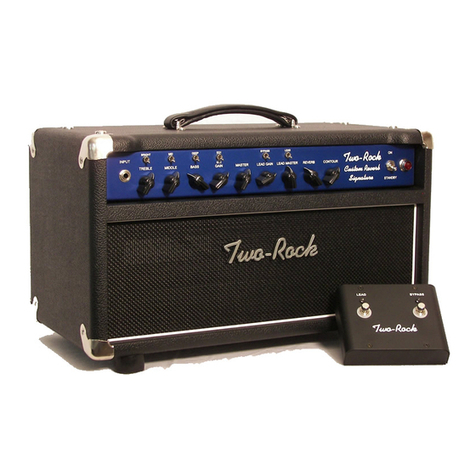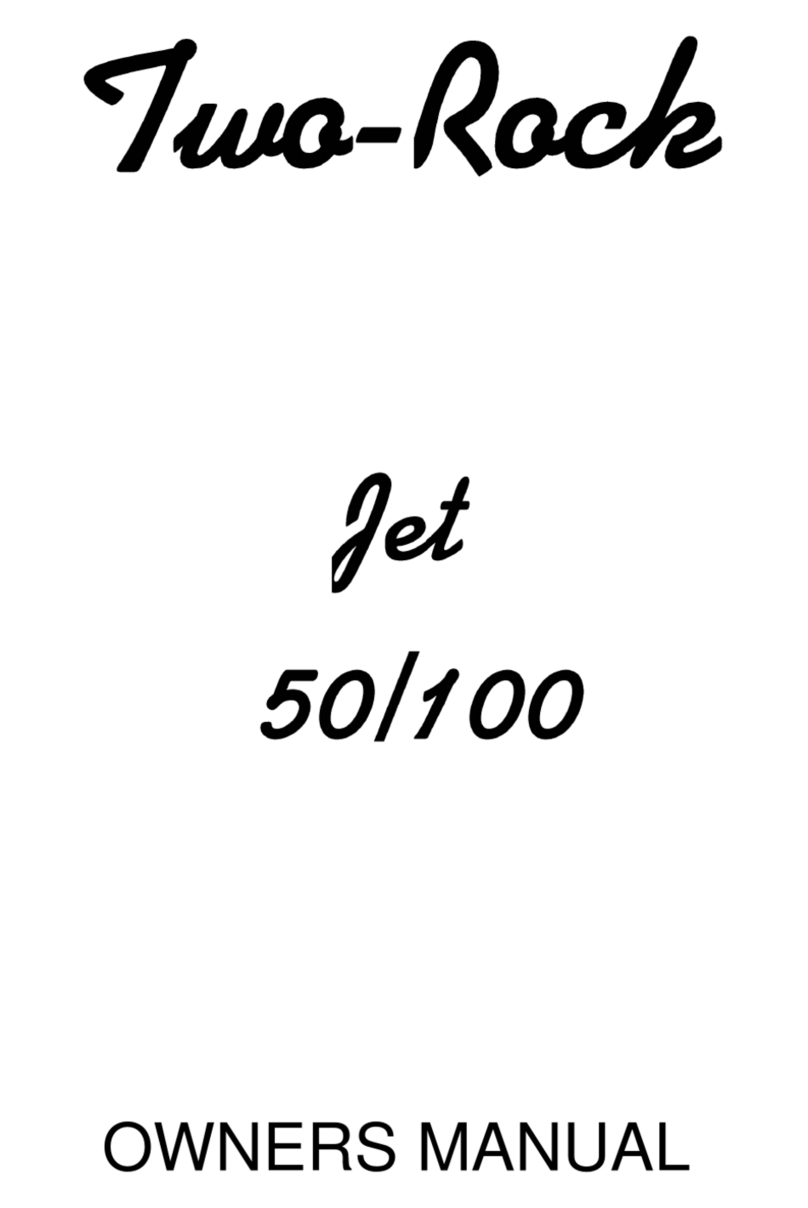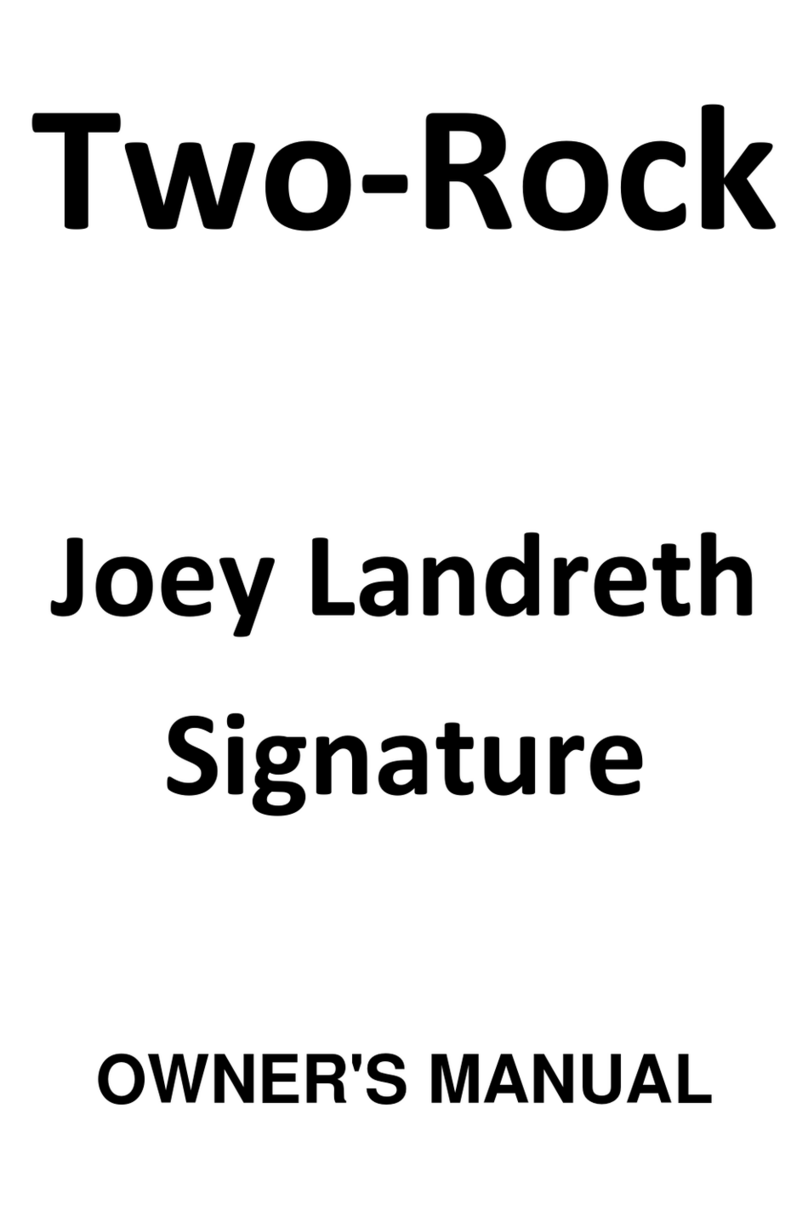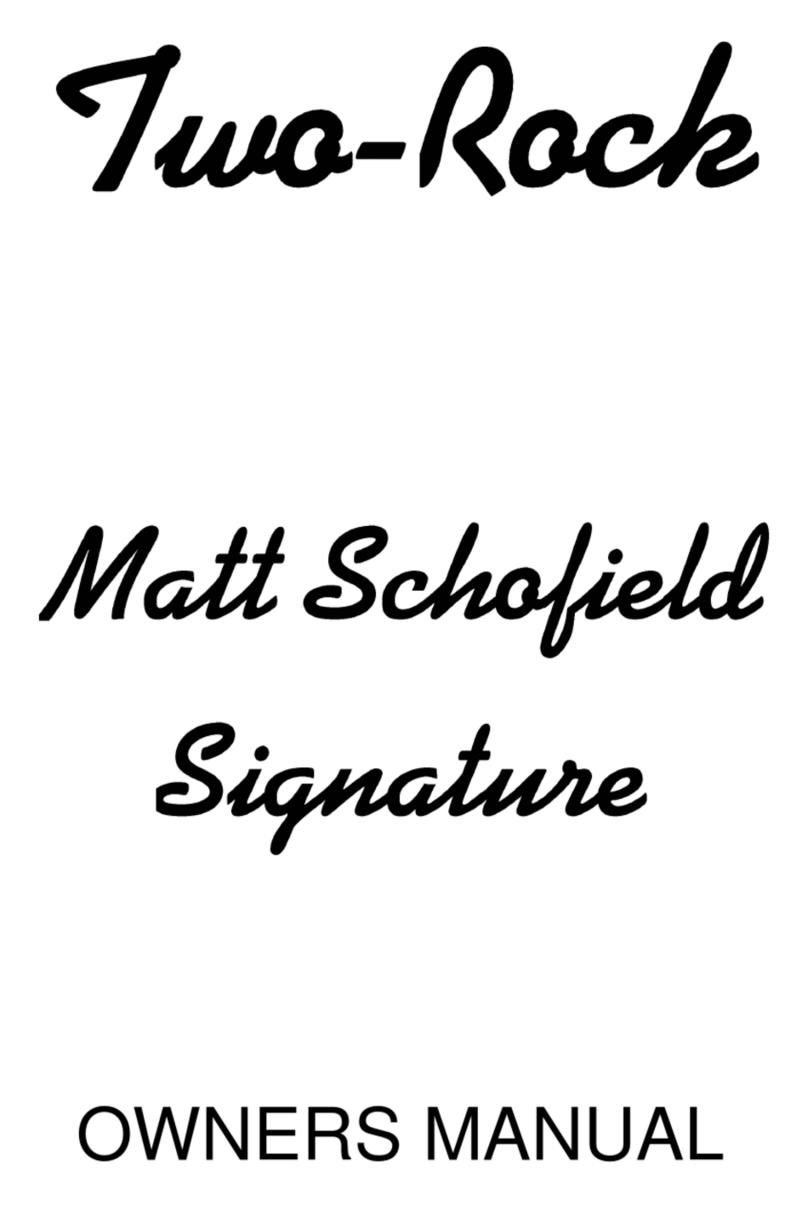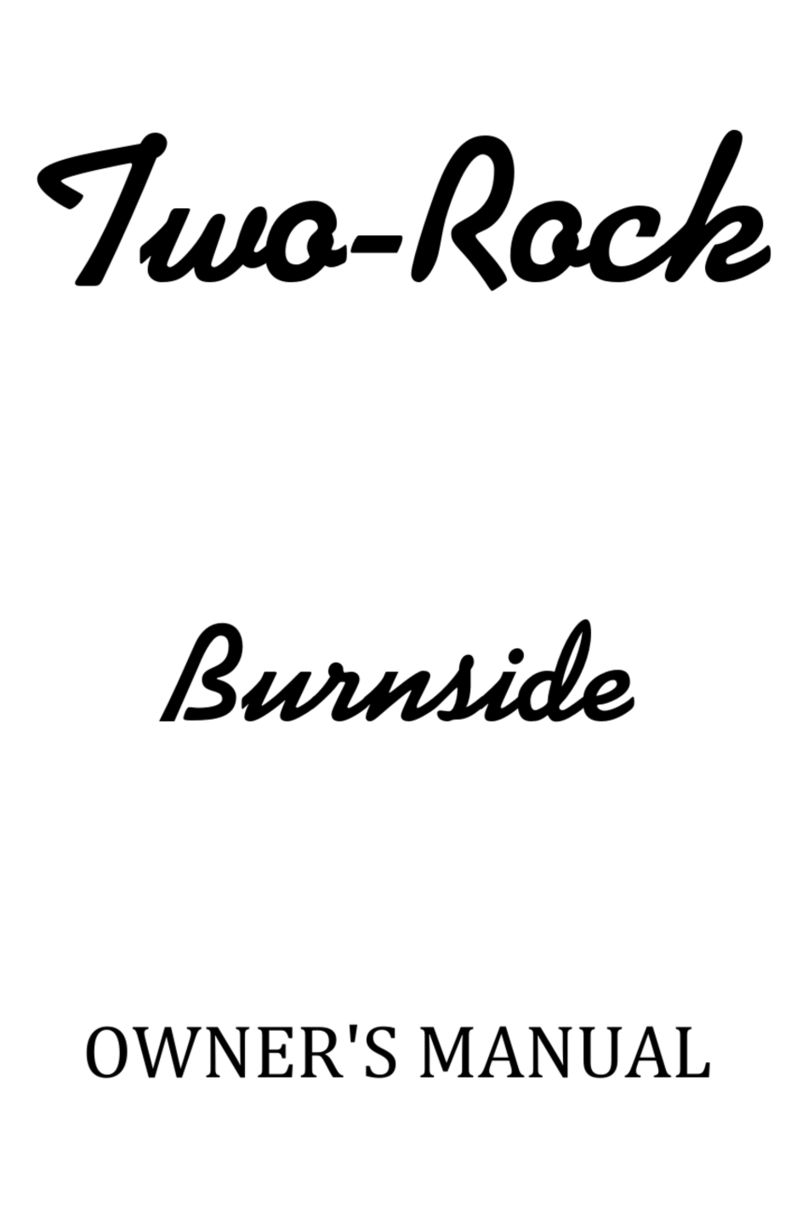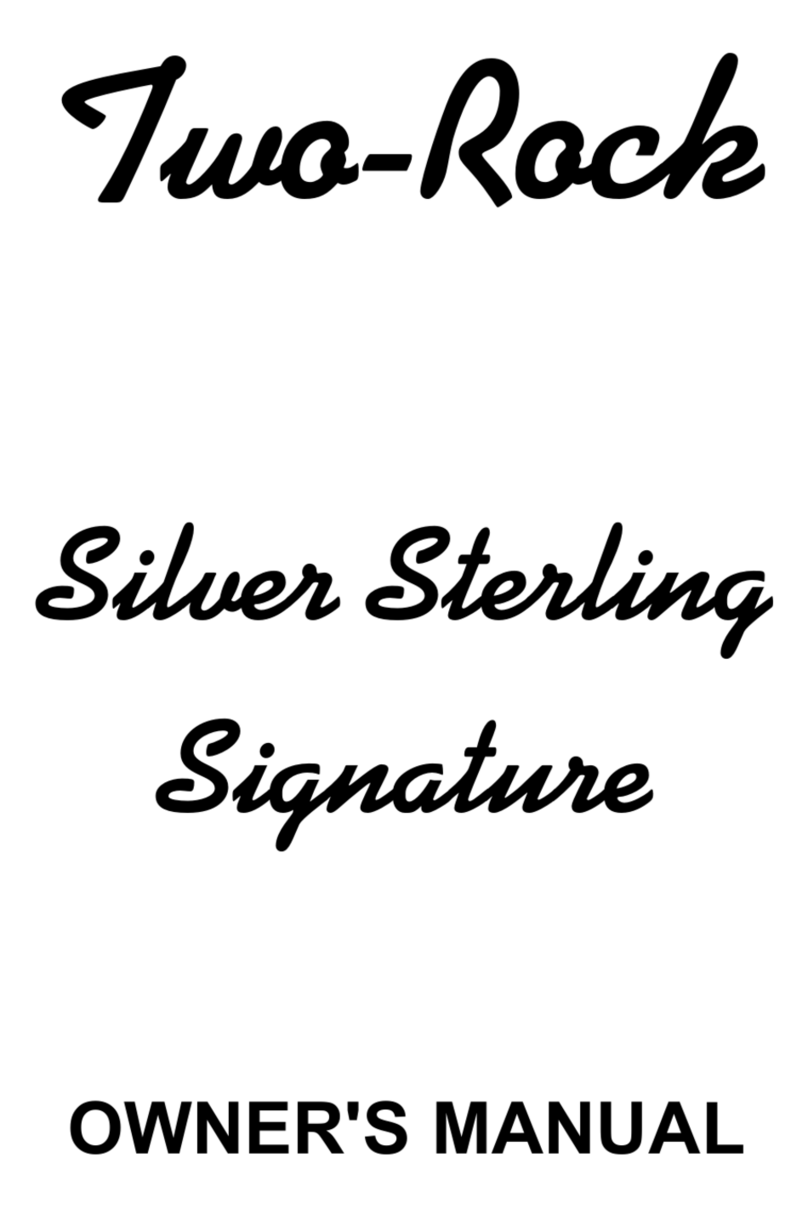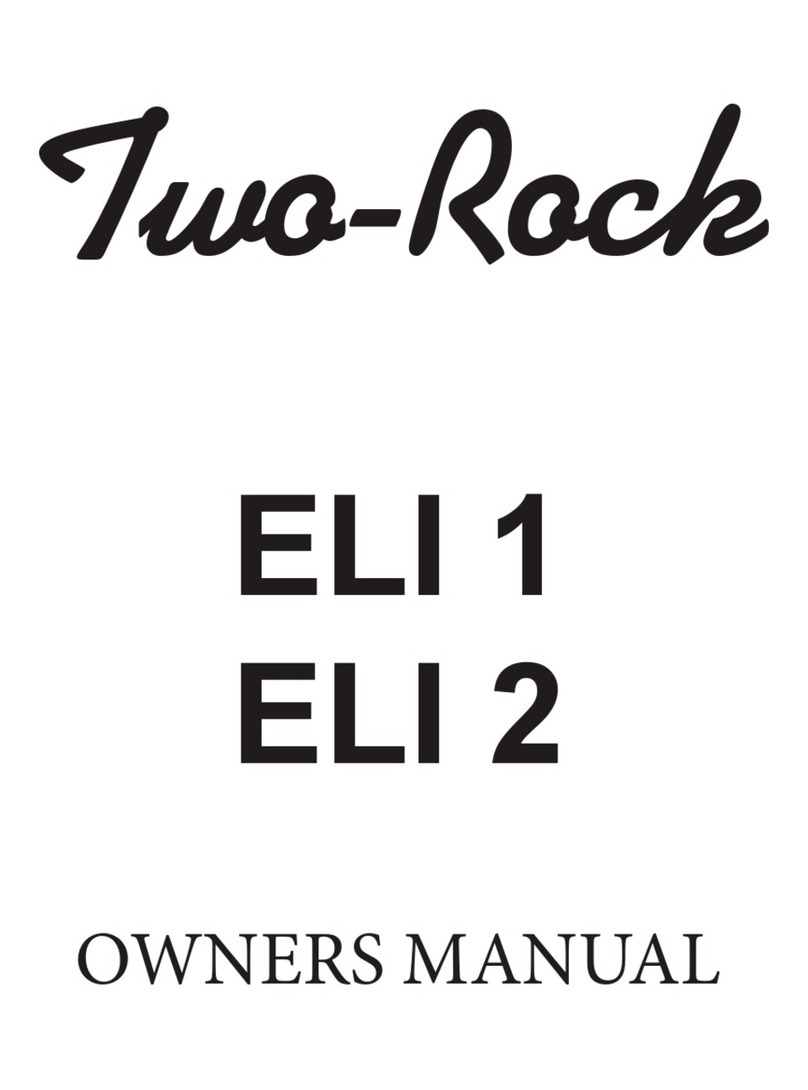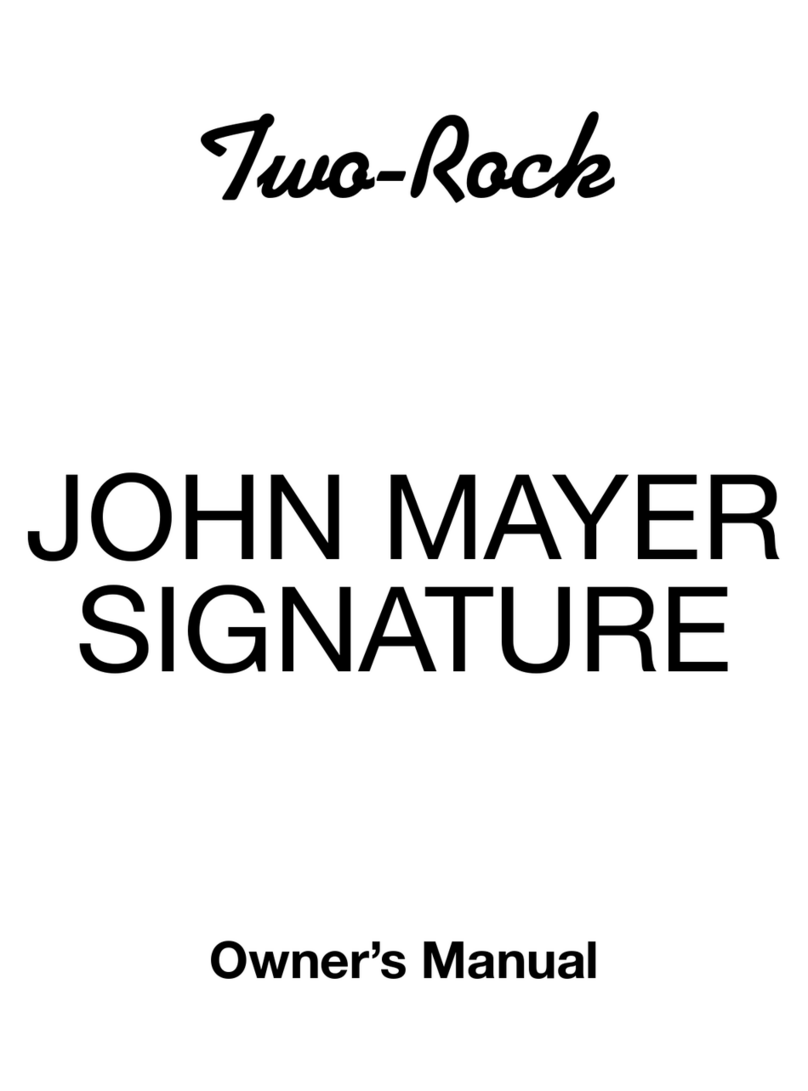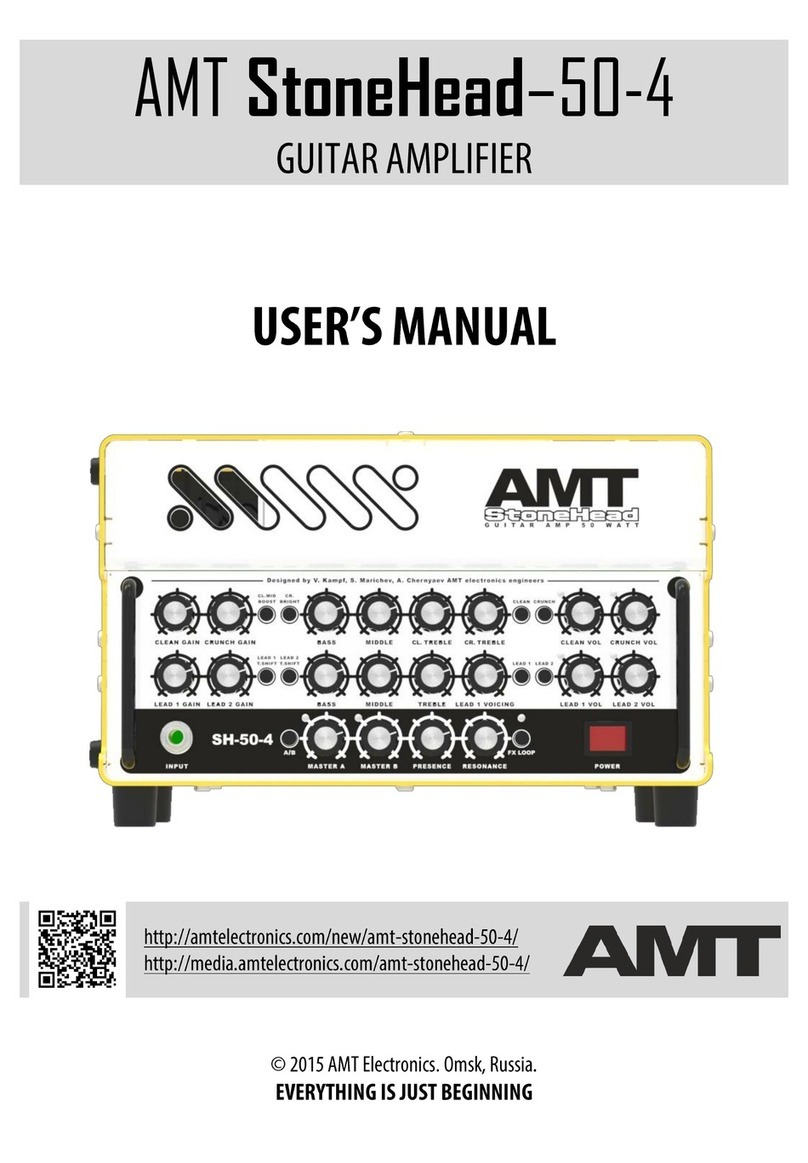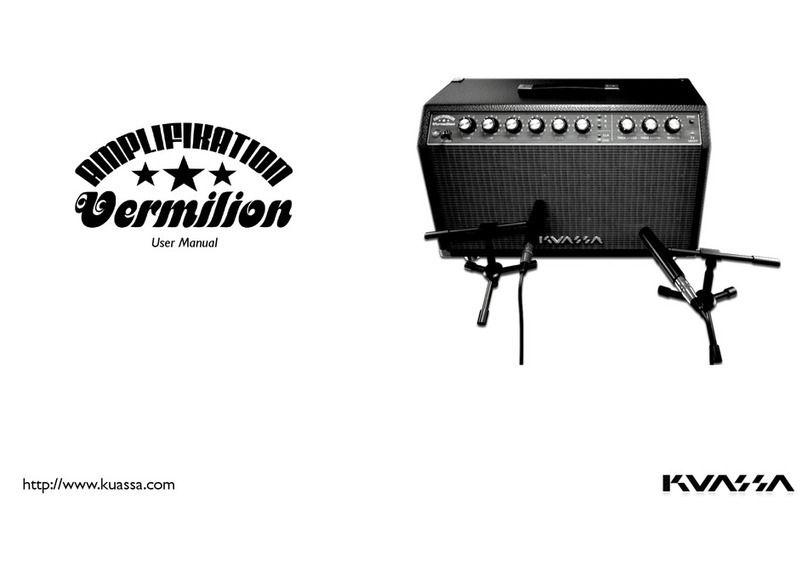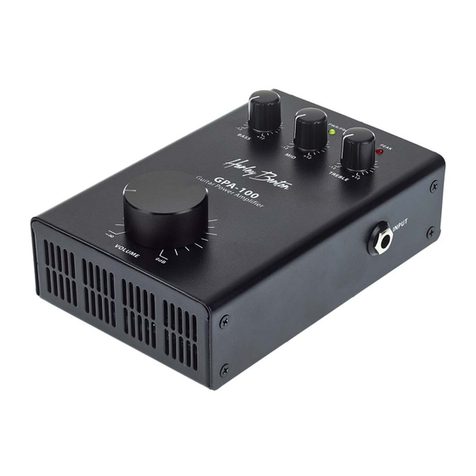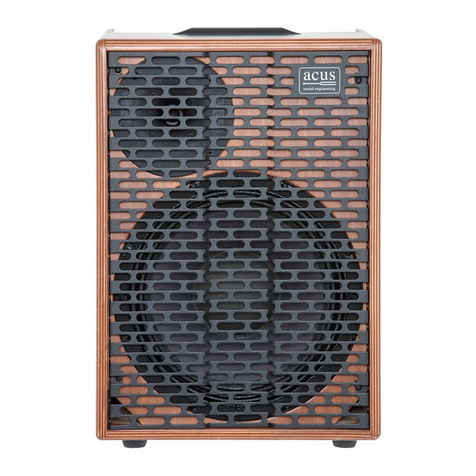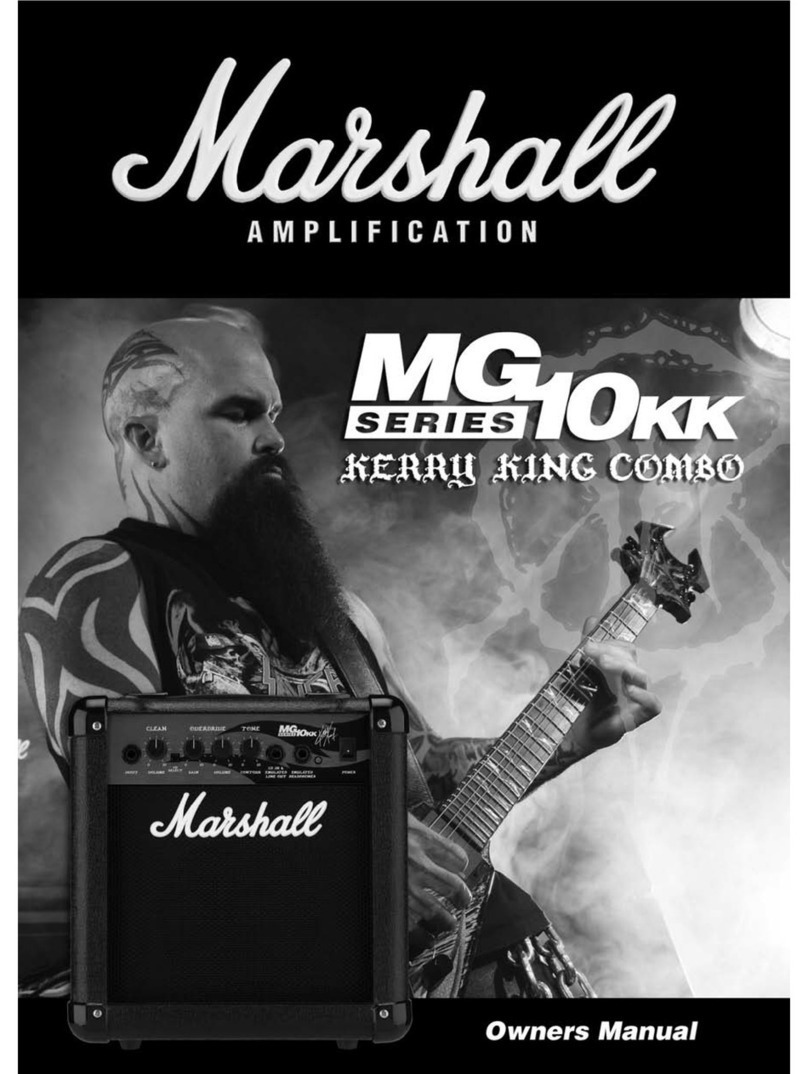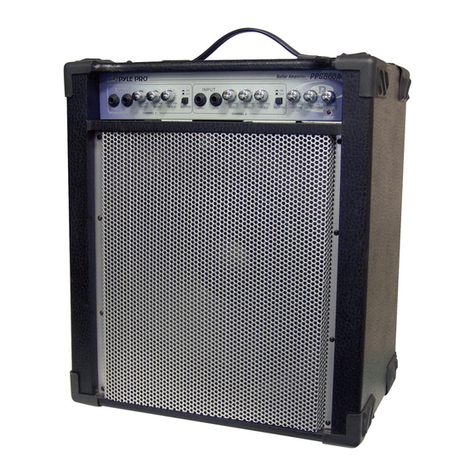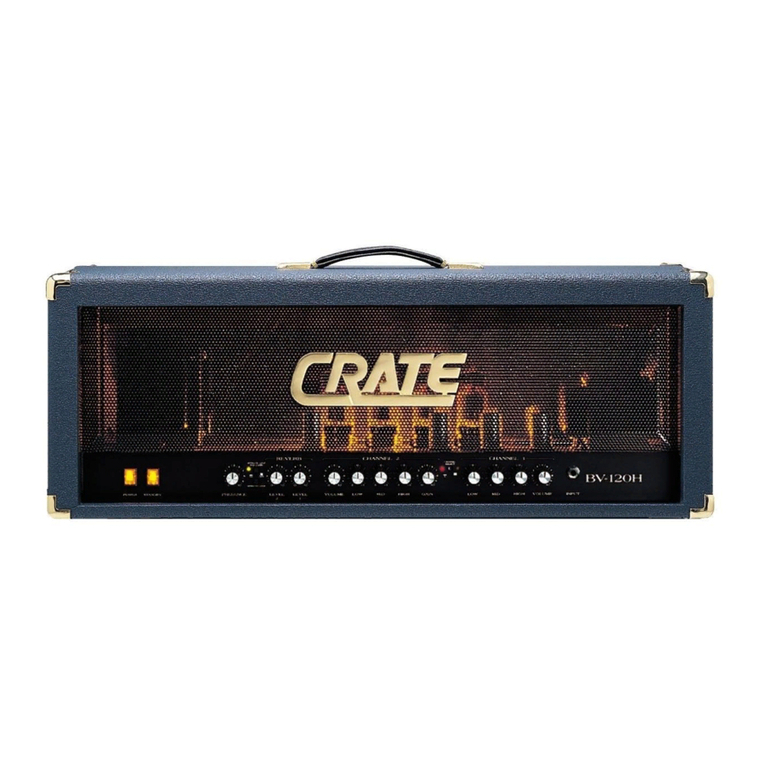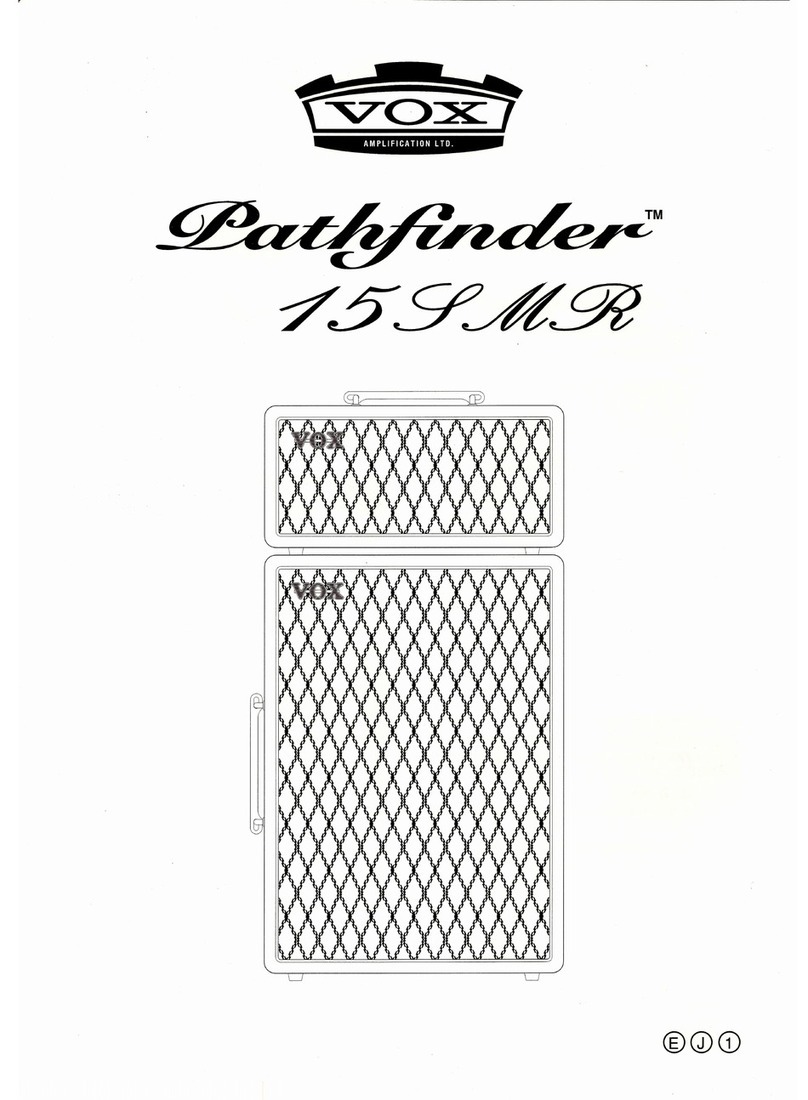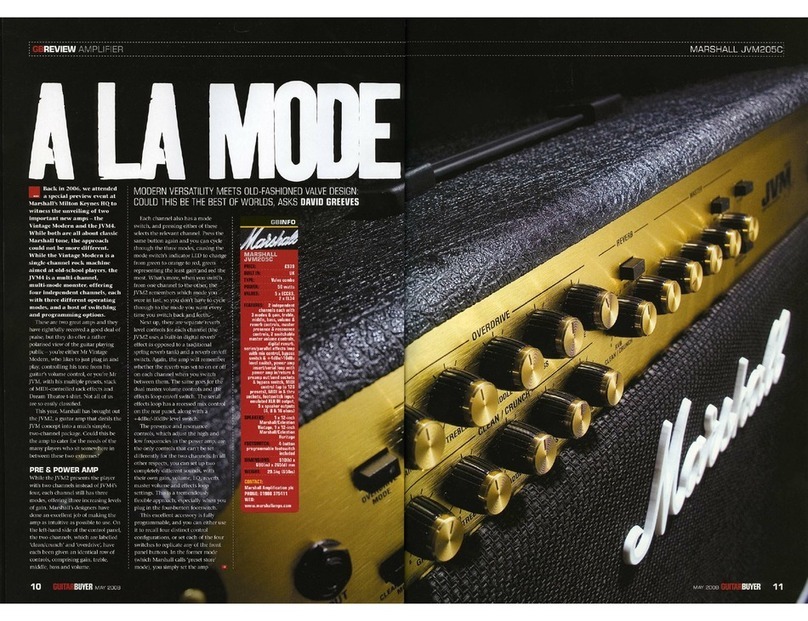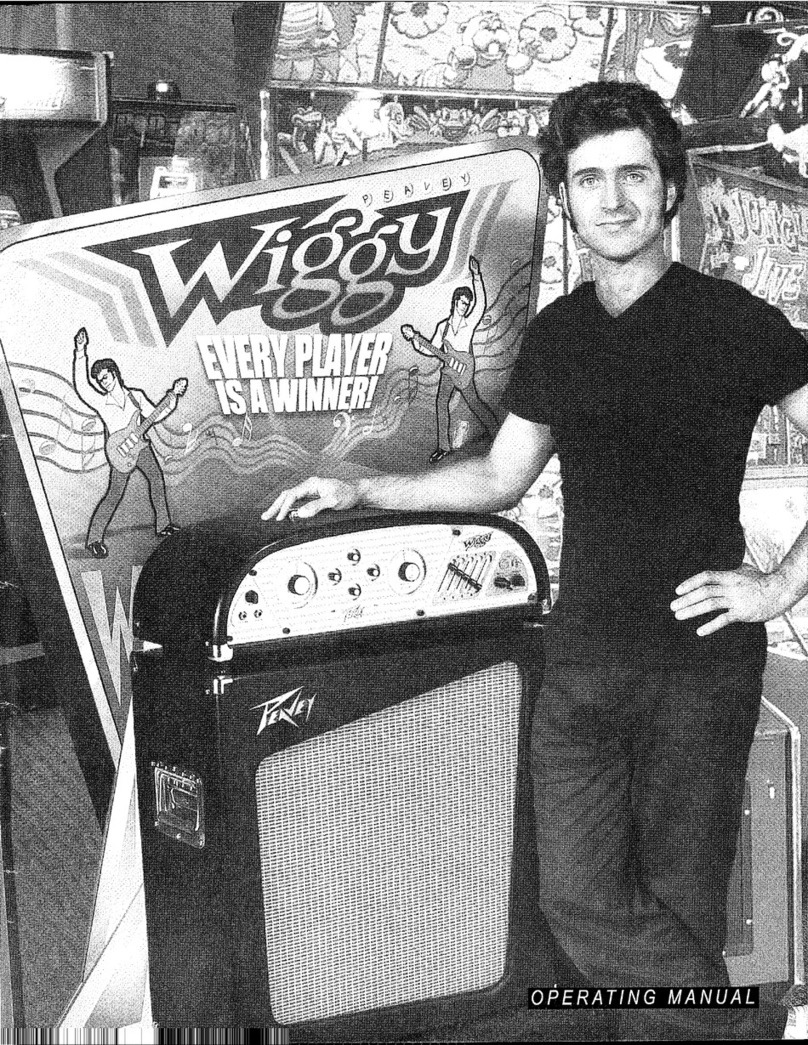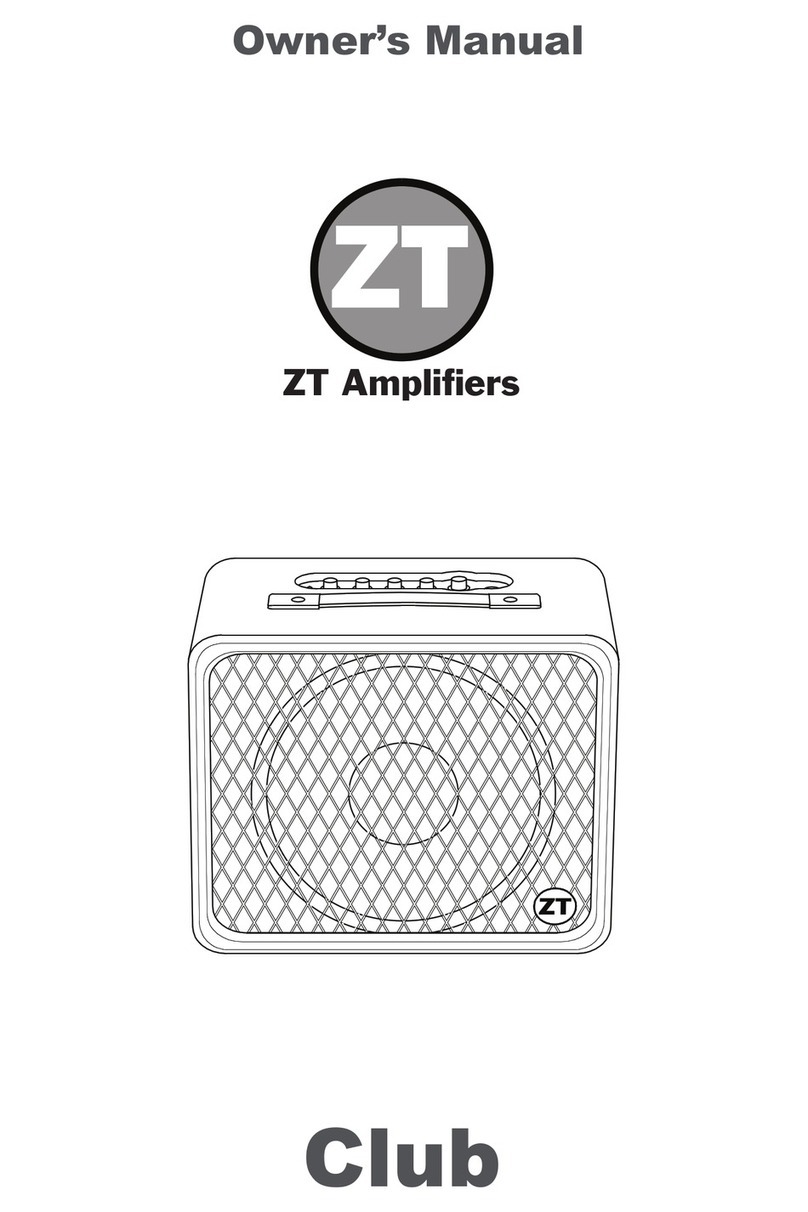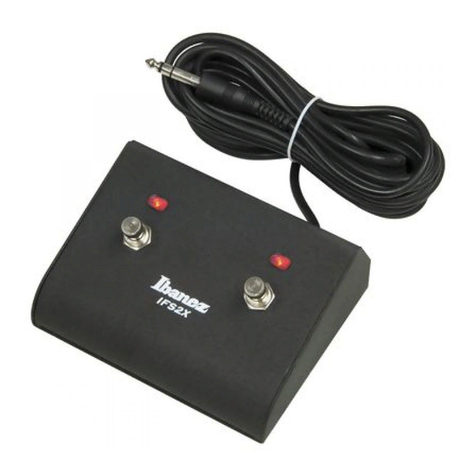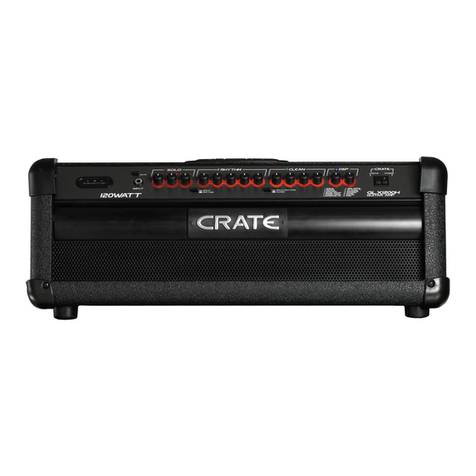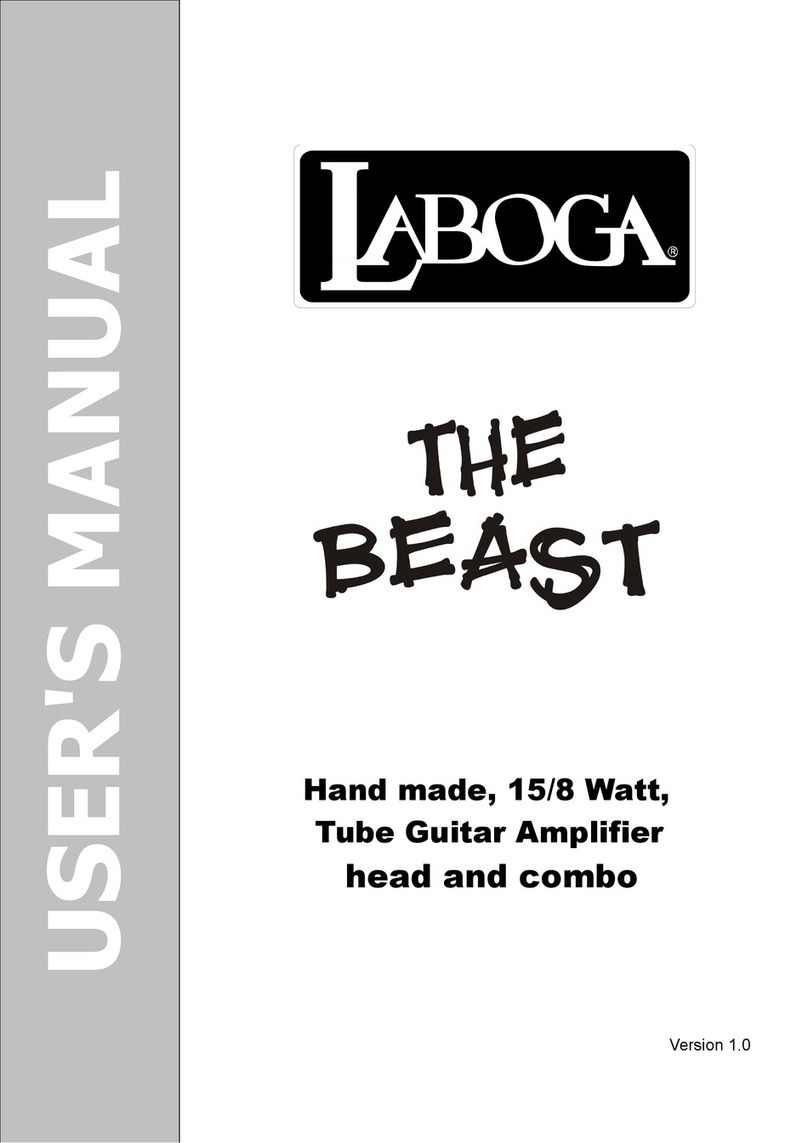Front Panel Functions
INPUT - High impedance input to the amplifier. Plug in your instrument here.
TEXTURE Switch - Changes the character of the amp from a softer scooped feel in the down
position to a faster attack with an increased amount of harmonic content and texture when
engaged (switch in up position).
GAIN - Adjusts the overall gain of the amplifier. Start with this control in the 12 o’clock position
then adjust to taste. This control determines the initial character of your tone, from cleaner/brighter
tones at low settings to fatter/warmer tones at higher settings. As you turn this control up it also
introduces more gain and bass into the signal path, and reduces the amount of available clean
headroom especially when the master volume is set higher.
BRIGHT Switch - Boosts the high frequency response. This is most effective when the
Gain control is set at 12 o’clock or lower. This is great for adding sparkle to clean tones. The effect
is less dramatic as the Gain control is adjusted past the 12 o’clock position.
TREBLE - Adjusts the high frequency response. At lower settings of this control the tone will be
warmer and smoother. As you turn this control up the highs become more prominent and
aggressive adding gain to the signal as well. This control is very interactive with the Bright switch
and Middle control. In the full counter-clockwise position, high frequencies are bypassed to
ground. In the full clockwise position, high frequencies are allowed to pass to the next gain stage.
MIDDLE - Adjusts the midrange response. At low settings of this control the tone will be “scooped”
of midrange response, emphasizing the highs and lows. As this control is turned up, the midrange
frequencies are increased. This creates the “body” of your guitar’s tone and is very critical to both
the tonality, feel and overall response of the amplifier. Higher settings of this control also help your
tone to cut through the mix in both a live band situation as well as when playing the amp outdoors.
In the full clockwise position, mid-range frequencies are allowed to pass to the next gain stage.
BASS - Adjusts the bass response. In the full counter-clockwise position, low frequencies are cut
and the response of the treble and mid-range controls is greatly reduced. As this control is turned
up, the bass frequencies are increased and allowed to pass to the next gain stage.
